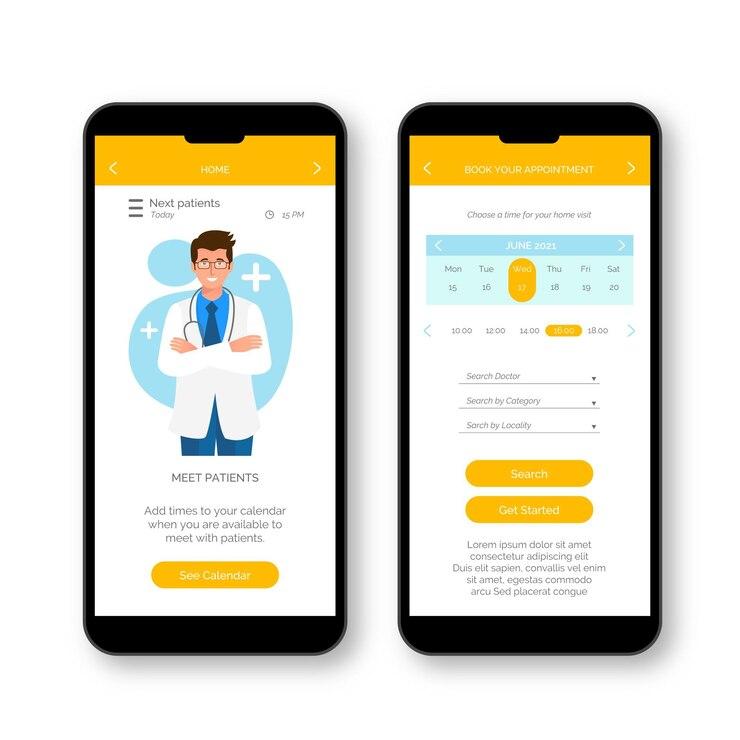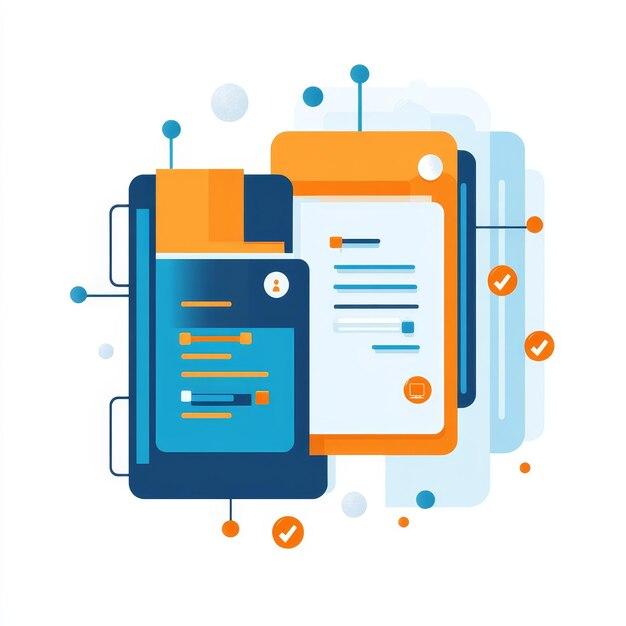In today’s fast-paced digital age, the healthcare industry is rapidly evolving. One significant advancement is the development of medicine delivery apps, which have transformed how people access medications. Building a successful medicine delivery app requires a deep understanding of technological and healthcare needs. This comprehensive guide will walk you through the essential steps to medicine delivery app development that meets market demands and ensures a seamless user experience.
Understanding the Market for Medicine Delivery Apps
The Growing Demand for Medicine Delivery Apps
The demand for medicine delivery apps has surged, especially after the COVID-19 pandemic. Patients prefer the convenience of having medications delivered to their doorstep, reducing the need for frequent trips to the pharmacy. The aging population and the increasing prevalence of chronic diseases also contribute to the rising demand. According to a report by Allied Market Research, the global online pharmacy market is expected to reach $128 billion by 2023, highlighting the vast potential in this sector.
Key Competitors and Market Analysis
Before diving into development, it is crucial to analyze the market and understand your competitors. Some key players in the medicine delivery app market include PillPack, NowRx, and 1mg. Analyzing their strengths, weaknesses, and unique selling points can provide valuable insights. For instance, PillPack’s success lies in its innovative packaging and personalized medication management. Understanding these aspects will help you identify opportunities for differentiation and improvement.
Essential Features for a Medicine Delivery App
User-Friendly Interface
A user-friendly interface is paramount for the success of any app. The design should be intuitive, with easy navigation and a clean layout. Ensure that users can effortlessly search for medications, place orders, and track deliveries. Incorporate accessibility features to cater to diverse users, including the elderly and those with disabilities.
Secure User Authentication
Security is a top priority, especially when dealing with sensitive health information. Implement robust user authentication methods such as two-factor (2FA) and biometric verification. Ensure compliance with regulations like HIPAA (Health Insurance Portability and Accountability Act) to protect user data and build trust.
Comprehensive Medication Database
Your app should feature a comprehensive database of medications, including details on dosages, side effects, and interactions. The database should be regularly updated to ensure accuracy. Provide detailed descriptions and images to help users identify medications easily.
Prescription Upload and Verification
Allow users to upload prescriptions directly through the app. Implement a verification system to ensure that prescriptions are valid and issued by licensed healthcare professionals. This feature is crucial for maintaining the integrity and legality of the service.
Real-Time Order Tracking
Real-time order tracking enhances transparency and improves the user experience. Integrate GPS tracking to allow users to monitor their delivery status from the moment it leaves the pharmacy until it arrives at their doorstep.
In-App Consultation with Pharmacists
Offering in-app consultations with licensed pharmacists can add significant value. Users can seek advice on medication usage, side effects, and potential interactions. This feature improves user satisfaction and sets your app apart from competitors.
Secure Payment Gateway
Integrate a secure payment gateway that supports multiple payment methods, including credit/debit cards, digital wallets, and insurance claims. Ensure that transactions are encrypted and compliant with industry standards to protect user financial information.
Push Notifications and Reminders
Push notifications and reminders help users manage their medication schedules. Send timely alerts for prescription refills, order updates, and health tips. Personalize notifications based on user preferences and medication history.
Steps to Develop a Medicine Delivery App
Step 1: Conduct Market Research
Conducting thorough market research is the foundation of successful medicine delivery app development. Understand the needs and preferences of your target audience. Identify gaps in the market that your app can fill. Use surveys, interviews, and focus groups to gather insights.
Step 2: Define Your App’s Purpose and Features
Clearly define the purpose of your app and the features it will offer. Based on your market research, create a detailed list of functionalities. Prioritize features that enhance user experience and provide a competitive edge.
Step 3: Choose the Right Technology Stack
Choosing the right technology stack is critical for the app’s performance and scalability. For the front-end, consider using frameworks like React Native or Flutter for cross-platform compatibility. For the back-end, opt for robust frameworks like Node.js or Django. Ensure your tech stack supports scalability to accommodate future growth.
Step 4: Design the User Interface
Work with experienced UI/UX designers to create an intuitive and visually appealing interface. Focus on simplicity and ease of use. Conduct usability testing with real users to identify and fix any design flaws.
Step 5: Develop the App
Begin the development process by building a minimum viable product (MVP) with core features. Use agile development methodologies to allow for iterative testing and improvements. Collaborate closely with your development team to ensure the app meets your specifications.
Step 6: Integrate APIs and Third-Party Services
Integrate necessary APIs and third-party services to enhance the app’s functionality. This may include GPS tracking APIs for real-time delivery updates, payment gateway APIs for secure transactions, and medical databases for comprehensive drug information.
Step 7: Test Rigorously
Testing is crucial to identifying and fixing bugs or issues before the app goes live. Conduct various types of testing, including functional, usability, security, and performance testing. Gather feedback from beta testers and make necessary improvements.
Step 8: Launch and Promote Your App
Once the app is thoroughly tested and refined, prepare for launch. Create a marketing strategy to promote your app across various channels, including social media, email marketing, and online advertising. Highlight the unique features and benefits of your app to attract users.
Step 9: Gather Feedback and Iterate
After the launch, continuously gather feedback from users. Monitor app performance and user reviews to identify areas for improvement. Regularly update the app with new features and enhancements based on user feedback and market trends.
Ensuring Compliance and Security
Adhering to Healthcare Regulations
Compliance with healthcare regulations is non-negotiable. Ensure your app adheres to laws such as HIPAA in the US, GDPR in Europe, and other relevant regulations in your target markets. This involves securing user data, obtaining necessary certifications, and regularly auditing your systems for compliance.
Implementing Robust Security Measures
Implement robust security measures to protect user data. This includes end-to-end encryption, secure authentication methods, and regular security audits. Educate users on best practices for maintaining their account security.
Enhancing User Engagement and Retention
Providing Excellent Customer Support
Excellent customer support is key to user satisfaction and retention. Offer multiple support channels, including live chat, email, and phone support. Ensure your support team is well-trained and responsive to user inquiries and issues.
Offering Loyalty Programs and Discounts
Loyalty programs and discounts can incentivize users to keep using your app. Offer rewards for regular purchases, referrals, and timely prescription refills. Personalize offers based on user preferences and purchase history.
Regularly Updating Content and Features
Keep your app fresh and engaging by regularly updating content and features. This could include health tips, new medication information, and seasonal offers. Stay abreast of industry trends and incorporate new technologies and innovations to enhance user experience.
Conclusion
Building a successful medicine delivery app requires a strategic approach encompassing market research, user-centric design, robust technology, and stringent security measures. You can contact and Android / iOS development company to help you build an applocation that suits your needs. By understanding the needs of your target audience and continuously improving your app based on feedback and trends, you can create a reliable and user-friendly service that meets the growing demand for convenient medication delivery.
Leverage these insights and best practices to start your journey to developing a top-tier medicine delivery app. The future of healthcare is digital, and with the right approach, your app can become an indispensable part of this evolving landscape.






